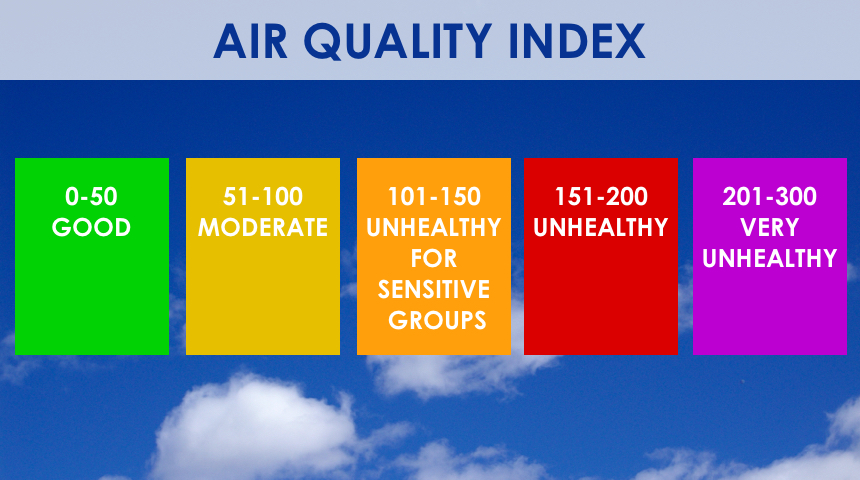What is the Air Quality Index? The “AQI” is an index used for reporting forecasted and daily air quality. The AQI uses color-codes and a numerical scale to report how clean or polluted the air is and what associated health effects might be of concern. The AQI focuses on health effects people may experience within a few hours or days after breathing polluted air. The AQI is calculated for five major pollutants regulated by the Clean Air Act: particulate matter, ozone, carbon monoxide, sulfur dioxide, and nitrogen dioxide.
How Does the AQI Work? Think of the AQI as a yardstick that runs from 0 to 300. The higher the AQI value, the greater the level of air pollution and the greater the health concern. For example, an AQI value of 50 represents good air quality with little potential to affect public health, while an AQI value over 200 represents very unhealthy air quality. An AQI value of 100 generally corresponds to the national air quality standard for the pollutant, which is the level the Environmental Protection Agency (EPA) has set to protect public health. AQI values below 100 are generally thought of as satisfactory. When AQI values are above 100, air quality is considered to be unhealthy – at first for certain sensitive groups of people, then for everyone as AQI values get higher. For more information on the AQI, download the following EPA publication: Air Quality Index: A Guide to Air Quality and Your Health
Air quality can impact your day as much as the weather and traffic can — which makes checking daily air quality forecasts an equally important part of your routine. Visit our Current Air Quality page or download the Clean Air Partners Air Quality App to have air quality information at your fingertips.
|
Air Quality Index |
Numerical |
Meaning |
| Good | 0-50 | Air quality is considered good, and air pollution poses little or no risk. |
| Moderate | 51-100 | Air quality may pose a moderate health risk, especially for those who are unusually sensitive to air pollution. |
| Unhealthy for Sensitive Groups |
101-150 | Members of sensitive groups, children and adults with respiratory and heart ailments, may experience health effects and should limit time spent outside. The general public is not likely to be affected. |
| Unhealthy | 151-200 | Everyone may experience health effects and should limit their outdoor activity; members of sensitive groups may experience more serious health effects. |
| Very Unhealthy | 201-300 | Everyone may experience more serious health effects and should avoid outdoor activities, especially individuals with heart and breathing ailments, children, and older adults. |




